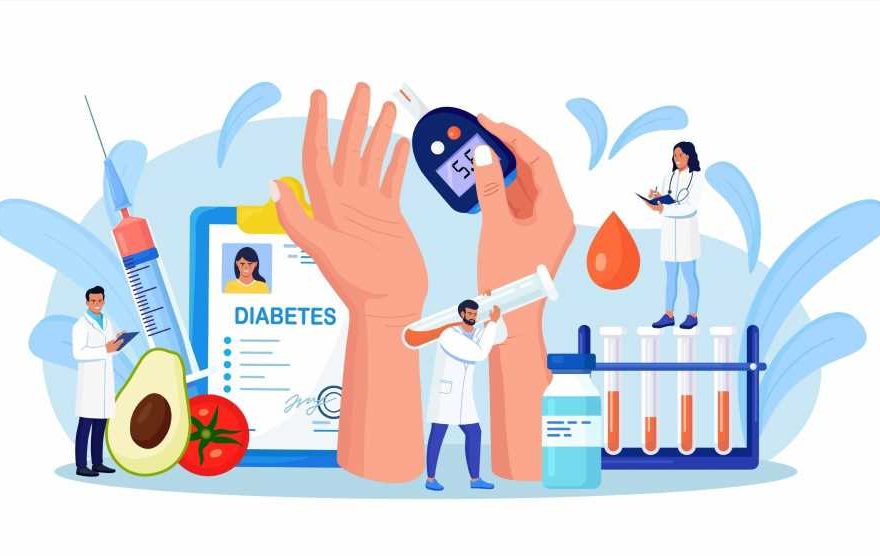New technologies, rapid research, and new treatments have contributed to transforming how diabetes is treated. Since 1989, the American Diabetes Association (ADA) has been providing annual updates and offering new guidelines that capture the most current information related to diabetes. For the 2023 Standards of Care, a conscious effort has been made to use terminology that people with diabetes can easily understand. A recent Diabetes Care journal paper summarized the latest recommendations offered to people with diabetes to improve their health and well-being.
 Summary of Revisions: Standards of Care in Diabetes—2023. Image Credit: Buravleva stock / Shutterstock
Summary of Revisions: Standards of Care in Diabetes—2023. Image Credit: Buravleva stock / Shutterstock
New Diabetes Guidelines
The summary of new amendments to the existing guidelines for people with diabetes is below:
- Community health workers must be utilized to manage diabetes and cardiovascular risk factors, especially in healthcare facilities with limited resources. To reach a broader population, digital health, telehealth, and telemedicine must be available in more languages. More defining terms have been added for non-English speakers to reduce the language barrier in diabetes education.
- The A1C test is recommended for diabetes diagnosis and screening at the point of care.
- Prevention or delaying Type 2 diabetes and associated comorbidities through regular monitoring of the glucose level. Subsequent implementation of prevention measures in individuals at a high risk of developing type 2 diabetes. This approach is known as statin therapy. For example, Pioglitazone could be used to reduce the possibility of myocardial infarction or stroke in people with a history of insulin resistance and prediabetes. To support those with diabetes, weight loss, cardiovascular risk reductions, and a reduction in hyperglycemia progression must be considered.
- Several changes have been made in immunization, particularly concerning coronavirus disease 2019 (COVID-19) and pneumococcal pneumonia vaccinations. Several age-specific recommendations have been added.
- Individuals who have Nonalcoholic Fatty Liver Disease (NAFLD) and diabetes must be encouraged to lose weight and could be subjected to pharmacotherapy (glucagonlike peptide 1 (GLP-1) receptor agonists or Pioglitazone).
- Improve health outcomes by encouraging behavior changes. Providing psychosocial support to people with diabetes is essential to standard diabetes care.
- Guidelines on diabetes self-management education and support (DSMES) have been updated. Digital platforms and telehealth delivery systems have been recommended to deliver DSMES.
- Proper meal patterns and meal planning have been recommended.
- The effectiveness of setting a goal to achieve and maintain a glycemic target has been described, which could benefit those at a high risk of hypoglycemia.
- Regular use of diabetes devices is highly recommended. Based on several findings, continuous glucose monitoring (CGM) has been advised for diabetic adults treated with basal insulin. Furthermore, people with diabetes must have uninterrupted access to relevant supplies for minimal disturbances in CGM use.
- The current guidelines refer to obesity as a chronic disease. Therefore, small and significant weight loss should be treatment goals based on the individual patient's requirements. However, more extensive weight loss, i.e., 10% or more, might have disease-modifying effects, including improvements in long-term cardiovascular outcomes and diabetes remission.
- Adults with type 2 diabetes are at a high risk of developing atherosclerotic cardiovascular disease and chronic kidney disease. Therefore, a treatment plan should include strategies that substantially decrease cardiorenal risk.
- Moderate-intensity statin therapy has been recommended for adults above 75 years of age who have diabetes. The same-aged adults with diabetes and atherosclerotic cardiovascular disease are advised to high-intensity statin therapy.
- Appropriate clinical interventions are formulated to prevent and reduce the progression of chronic kidney disease. Mineralocorticoid receptor antagonists have been recommended to protect the kidney.
- Older adults with type 1 diabetes could be subjected to automated insulin delivery systems or other advanced insulin delivery devices (e.g., connected pens). This could reduce the risk of hypoglycemia.
- The new treatment plan is to reduce the risk of hypoglycemia and polypharmacy. The disease burden could be decreased by achieving an individual's A1C target.
- Proper nutrition counseling has been recommended to manage diabetes during pregnancy. Nutrition counseling would enable appropriate management of carbohydrates and macronutrients through diet.
Conclusions
The current guidelines emphasize weight loss and healthy eating habits. It also included that individuals with diabetes must be provided with appropriate psychosocial support as a part of the standard diabetes care. CGM devices have been recommended for real-time CGM in children and adults, which has proved highly beneficial. Since individuals with diabetes are at a higher risk of developing kidney and cardiovascular disease, proper preventive measures must be undertaken.
- ElSayed, A.N. et al. (2022) Summary of Revisions: Standards of Care in Diabetes—2023. Diabetes Care, 46 (1), S5–S9. https://doi.org/10.2337/dc23-Srev, https://diabetesjournals.org/care/article/46/Supplement_1/S5/148048/Summary-of-Revisions-Standards-of-Care-in-Diabetes
Posted in: Men's Health News | Medical Condition News | Women's Health News | Disease/Infection News
Tags: Cardiovascular Disease, Children, Chronic, Chronic Disease, Chronic Kidney Disease, Coronavirus, covid-19, Diabetes, Diet, Education, Fatty Liver, GLP-1, Glucose, Healthcare, Hyperglycemia, Hypoglycemia, Immunization, Insulin, Insulin Resistance, Kidney, Kidney Disease, Language, Liver, Liver Disease, Myocardial Infarction, Nutrition, Obesity, Pioglitazone, Pneumonia, Prediabetes, Pregnancy, Receptor, Research, Statin, Stroke, Telemedicine, Type 1 Diabetes, Type 2 Diabetes, Weight Loss

Written by
Dr. Priyom Bose
Priyom holds a Ph.D. in Plant Biology and Biotechnology from the University of Madras, India. She is an active researcher and an experienced science writer. Priyom has also co-authored several original research articles that have been published in reputed peer-reviewed journals. She is also an avid reader and an amateur photographer.
Source: Read Full Article
